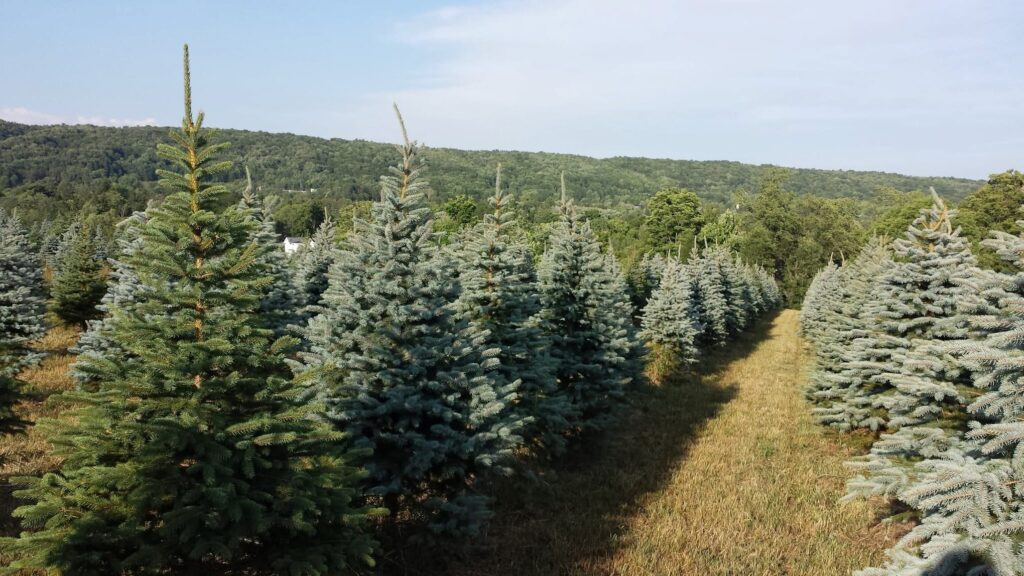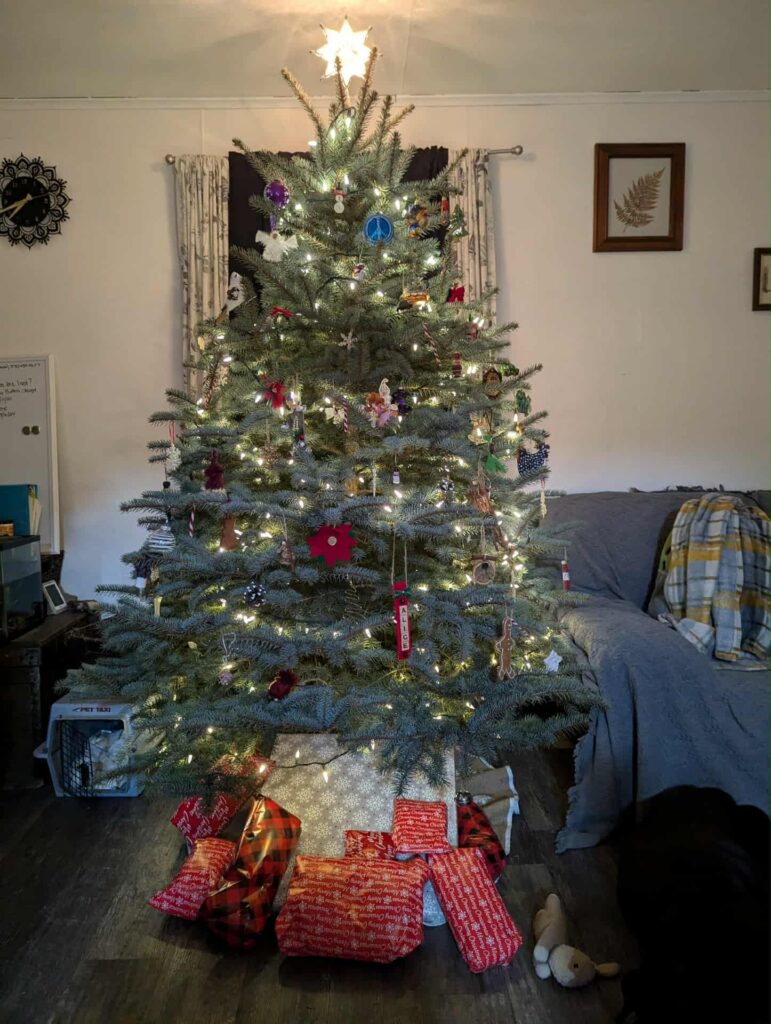
I love setting up my fresh cut Christmas tree each year. It is one of my favorite holiday traditions. I have always loved evergreen trees, and bringing one in the house, with its stately silhouette, gently arching branches, and fragrant needles is like taking a piece of the woods into my home for the holidays.
Picking out a live Christmas tree has long been a family holiday tradition, whether it’s selecting a precut from the Scout fundraiser lot or getting the family bundled up for a sleigh ride out to the u-cut field at your local Christmas tree farm. If you’re worried about the effects of harvesting live Christmas trees on the environment, fear not—Christmas trees are a farm product. That means they are intentionally planted for the purpose of harvesting, not impacting wild stands or woodland populations. To assuage your worries even more, The NY Christmas Tree Farmers Association asserts that for every one tree harvested, two to three seedlings are planted in its place.
While we may only think about the Christmas tree farm as we finish up our Thanksgiving meal, Christmas trees, like any other crop, need season-long tending. When it comes to growing trees, it’s a years’ long process, with the typical age of a harvested tree being seven to ten years old. From seedling stage to harvest, the trees need protection, pruning, and leader selection at the least, with irrigation and fertilizer as important tasks, especially during seedling establishment and drought.



In 2024 New York ranked fourth in number of Christmas tree farms, with 875 tree farms covering approximately 19,000 acres. The vast majority of the Christmas tree farms in our state are small, family owned operations that serve their local communities as opposed to large scale production for export.
Can you think of the name of a local Christmas tree farm near you? I have visited several in Western New York, but one special farm that comes to mind is Roth’s Hillside Farm, owned and operated by a former landscaping colleague of mine, Jeremy Roth. Roth’s Hillside farm is a third generation family farm in Holland, New York and has been in operation since the early 1900’s. The farm began as a dairy operation but converted to growing Christmas trees in 1992. The farm is located just off the main route, with rolling hills of evergreens set behind the gift shop and barn, where precut trees, wreaths, gifts, and your friendly round bale snowman stands ready for a holiday photo op. Roth’s wife, Amber, runs their gift shop, with farm-made wreaths and other decor and a variety of gifts for sale.
When it comes to picking out a Christmas tree, I think about form, fragrance, relative sturdiness, and touch-ability. I might have invented that last word, but I’m a tactile person; part of any nature experience for me is through gentle touch. For this reason, I love the firs (Abies spp.) as their soft, flat needles run gently through my hands and don’t bite back when I need to finagle an ornament around the end of their branch. Roth’s Hillside Farm grows Canaan, concolor, and Fraser firs, as well as Colorado blue and white spruces. Other common species grown for Christmas trees are Douglas-fir (not actually a fir), balsam fir, grand fir, white pine, Austrian pine, and Scotch pine. Each tree has its own unique set of characteristics, but for the most part all these varieties have good needle retention, upright, conical habit, and excellent color and texture.
If fragrance is high on your list, look no further than Douglas, balsam, and my personal favorite, the concolor fir, which has a unique citrusy fragrance. If you have allergy concerns, consider white pine—it has little to no scent, and its bunches of soft airy needles are a favorite as both a tree and in wreath and garland displays. Do you have an abundance of ornaments that all must go on the tree? Scotch pine’s open branching habit to the rescue! For those with heavy ornaments and a penchant for the silvery blue needles, Colorado blue spruce provides sturdy branches fit for a host of weighty decor. Just be wary of the sharp needles, and note that for best needle retention, you should choose a cooler location in the house for this species.



While admiring your Christmas tree, you may wonder about its landscape suitability, for what gardener can go very long without thinking about such things? While it is important to look at each species needs individually, Roth points out two general considerations when thinking about spruces versus firs. On the Roth farm, spruces are grown up on the hillside to take advantage of drier terrain, as they are intolerant of wet soils. Their sharp needles make them far less palatable to deer, whereas the tender needles of the firs can be a welcome snack for deer in winter when little else is available.
Once the gifts are unwrapped and the ornaments tucked away, your real Christmas tree can keep on giving! If you have the space, consider setting the tree out in your yard for wildlife to utilize as food and cover as it breaks down over winter. In spring, you can further cut the tree up to compost or add to your brush pile, or just leave it to decompose if you have woodland space. If you have friends who own goats, ask if they would like your tree for a midwinter snack—I know mine do! Make sure the tree is free of any antidesiccant sprays that are sometimes used to preserve needles, as well as stray bits of decoration.
To locate a Christmas tree farm near you, go to the Farm Locator page provided by the Christmas Tree Farmers Association of New York at ctfany.org/farm-locator.
Bonnie Warriner is a horticulturist and budding flower farmer with a love for capturing beauty in pictures and words. You can find her among the wildflowers and goats on her family’s 150 acre farm in Jasper, New York.
This article originally appeared in the November/December 2025 issue of Upstate Gardeners’ Journal.
Views: 0






